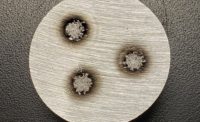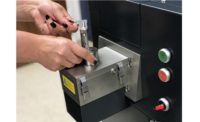
Figure 1: The sample matched two possible EVA values-15.24% and 18.21%-at a high level. The latter value placed the sample outside of the allowed variation, lowering the confidence of the operator in the method. Source: Thermo Fisher Scientific
The main function of spectroscopy in quality assurance/quality control (QA/QC) laboratories is to determine if a product meets control specifications in relation to its identity, composition or purity. Due to the importance of product quality, each step of QA/QC testing is defined by strict standard operating procedures (SOPs).
In today’s QC laboratory most of the responsibility for performance verification falls on the instrument and software itself, enabling operators to perform simple and accurate analyses and to focus on handling the increasing number of samples entering QA/QC laboratories. Improvements in fourier-transform infrared (FT-IR) instrumentation and software now provide effective sample verification and complete confidence in instrument operation.
During each stage of the manufacturing process there are unique challenges to product quality. As a result, incoming raw material, in-process sample and outgoing products must be monitored and tested for QC purposes. In order to prevent supplier quality issues from contaminating the current manufacturing process, it is important to devote substantial effort to goods-in or incoming raw material analysis.
Mid-stream analysis, where a sample is analyzed during processing, enables process control where parameters such as starting material concentration, solubility or temperature may be adjusted to maximize output or retain quality. In terms of ensuring released product quality downstream, customer complaints are monitored using data from the QC laboratory.
In laboratories that are not part of a manufacturing process but still regulated or subject to audits, such as forensics labs, questions over the performance of any instrument can be legitimately raised if there is no data showing its ongoing reliability. In order to mitigate risk it is important to establish credibility of the information provided by an FT-IR spectrometer. In the past, knowledge of all facets of spectrometer operation, from properly loading chart paper to final data interpretation, was required to obtain reliable answers creating a generation of expert users.
QC laboratories have since evolved in terms of personnel, instrumentation and throughput. In order to meet the demands of a modern QA/QC lab, FT-IR spectrometers must include capabilities that shift the burden of proving the reliability of information away from the analyst, leaving them to concentrate on samples.
In order to satisfy internal, regulatory and legal body requirements, there is a need for regular independent verifications of instruments with accurate record keeping. The pharmaceutical industry has a long history of being subject to stringent regulations, including the need for all drug-related data to be backed with instrument performance verification and validation. With the increasing involvement of the legal system, the food and beverage industry is moving toward the same model.
Add-on software and hardware tools have made this process simpler, but there is a need for a set of routine tools fully-integrated with the spectrometer (hardware and software). This study details some of the most notable changes in FT-IR instrument design for the QA/QC lab including hardware, regulatory compliance and software.

This is an example of modern, innate system intelligence. The green checks indicate all tests are passed and are current (note the inclusion of date information). Source: Thermo Fisher Scientific
Hardware
The QC lab environment is challenging for analytical instrumentation as the spectrometer may be exposed to noise, heavy machinery, solvent vapor or varying humidity levels. Vibrational tolerance is critical for spectrometer signal-to-noise and overall performance. Novel techniques are being applied to minimize the effects on spectral data resulting in significantly improved system performance. Advanced designs incorporate engineered base plates with specific support shapes and, in some cases, lighter materials to shift the spectrometer’s resonant frequency window away from interference with the spectral data.Other systematic improvements include vibration isolation and dynamic alignment for real-time optimization of signal. Systems also include advanced sealed and desiccated interiors or enhanced purge capabilities to slow the ingress of solvent and water vapors.
Many hardware features required to support system verification are now available pre-installed, as standard components. This includes validation wheels for ASTM compliance or testing against various pharmacopeia standards. These wheels permit verification or validation of wavenumber accuracy (X axis) and the absorption response (Y axis).
System Status
As the technology inherent in optical systems continues to advance so does innate system intelligence. From washing machines to automobiles, systems can now give clues in real-time as to their operation based on factory specifications. Cars have automated tire pressure gages and airbag readiness indicators.The same principles can be applied to spectrometers where a powerful integration of hardware, firmware and software allows operators to quickly and easily understand potential system issues that may occur during the lifetime of the spectrometer. This frees the analyst from having to be an expert in all parts of spectrometer operation and allows him to concentrate on his main tasks.
System intelligence as applied to a spectrometer can be divided into four categories: scheduled maintenance, instrument status, performance verification and system suitability. Together these innovative features help ensure confidence in data collected during normal operation. A visual alert informs the operator that some aspect of the spectrometer performance is not within the control specification.
Incorporation of the system maintenance status into the overall system indicator is a critical feature for modern FT-IR instruments in the QA/QC lab. This allows the operator to set a reminder at the proper interval so audits requirements can be met. When the specified reminder interval elapses, the operator is notified and the system performance verification icon turns yellow. This augments standard record keeping and provides a safeguard as laboratory personnel change over time.
Instrument status indicators have been incorporated into spectrometer designs for several years, but their capacity for communicating hard-to-access system performance data continues to grow, providing operators with a real-time virtual heartbeat of their spectrometer.
Modern spectrometer systems manage everything from basic checks such as power supply voltage to experimental concerns, such as interferogram size or excessive environmental interferences.
Performance verification routines provide regulatory or audit level detail on spectrometer performance, testing FT-IR systems against manufacturer-published specifications such as throughput and noise, as well as against standard methods including ASTM E1421-99 (2004).
These tests can use automated, internal standard operating procedures to carry out the analysis, eliminating operator error and ensuring consistency. For QA/QC labs that require a more significant level of validation compliance, more extensive packages are available including design qualification (DQ), installation qualification (IQ), operational qualification (OQ) and performance qualification (PQ). These packages comply with ASTM, US-FDA, Japanese Pharmacopeia and European Pharmacopeia guidelines and provide trend charting for long-term evaluation of system performance.
In order to accomplish measurements, standards are incorporated into and supported within the spectrometer beam path. These standards are traceable to national measurement bodies to comply with current regulations. For instance, NIST-traceable polystyrene SRM 1921a tests wave number accuracy on the X axis, and NIST-traceable NG11 glass measures photometric linearity on the Y axis. With these standards incorporated into the system’s automatic performance verification routine, multiple tests can run automatically to demonstrate that the system performs to specification.
System suitability uses a sample to determine if the spectrometer is ready for a specific analysis. Whereas performance verification uses internal standard beam paths to verify system performance against established specifications, system suitability is a real-world test using a customer sample with a known performance profile. The system suitability test can be configured to meet specific sample types. System suitability can include tests for specified throughput, specific sample peaks that should be present and their absorbance values.
More advanced algorithms include features like contamination analysis to test for the presence of material that might remain on an ATR crystal from a previous experiment.
The key differentiation between performance verification and system suitability lies with sampling. Performance verification uses traceable standards to check the spectrometer (and only the spectrometer) against an established set of criteria (ASTM, FDA and JP).
In contrast, system suitability uses the full system-spectrometer, sampling accessory and a customer supplied sample-to test against an internal audit or performance specification. Together, these ensure the spectrometer is audit-ready for operations today, in the operator’s lab, with the operator’s samples and accessories.
Software Design for Routine Use
Modern software packages allow QA/QC operators to run analyses at the touch of a button for rapid sample or contaminant identification or in automated multiple-run workflows where there is a large queue of samples.Advanced tools with information about how a new spectrum compares with other samples also have emerged. Even spectra taken under different conditions can now be easily compared. This process can discriminate two similar materials based on spectroscopic differences arising from routine variations in content. Natural products (plant materials) are a good example of a material where some variation is expected depending on the natural conditions (soils and weather).
Differentiating well-controlled process materials requires a higher level of discrimination power. Some quality algorithms may return multiple answers or use pass criteria that are too liberal. More stringent algorithms provide higher levels of discrimination, giving an even higher level of confidence.
Discrimination in the QC Lab
Polymer blends of polyethylene and ethylene vinyl acetate (EVA) are used for making food packaging films and hot melt adhesives. The raw materials contain EVA at various concentrations in the polyethylene matrix. In Figure 1, a target value for the production line was set at 15% EVA, with a very tight control limit required.A simple database of spectra from samples with a range of EVA concentrations was obtained and saved without the need for processing or library creation. Material from the production line was then run through the algorithm using the low-discrimination algorithm.
Turning on the high-sensitivity option provides the much more exacting result. Now, only the 15.24% match is within the allowed tolerance limit (0.98 match index) and the next closest is considerably lower. The algorithm stresses small differences, giving the QC lab a much higher level of confidence in the results. Further, this provides a semi-quantitative analysis of the sample without requiring regression or other fitting methods. This process works well for such a tightly controlled processing environment.
New advancements in both FT-IR spectrometer hardware and software are shifting responsibility for instrument performance from the analyst to the instrument itself. Performance verification and system suitability tests inform operators when their spectrometer is ready to operate. As a result, the analyst in the QA/QC laboratory can focus on the ever-growing number of samples being processed without needing to become an expert on every aspect of FT-IR systems operation, improving laboratory efficiencies and simplifying the process of complying with stringent regulatory requirements.
QUALITY ONLINE
For more information on spectroscopy, visit www.qualitymag.com to read the following:
Quality Innovations: “Analyzer ‘Sees’ the Light”
“Solve Common Industrial Problems with Automated SEM Analyses”
Web Exclusive: “Alloy Identification”

